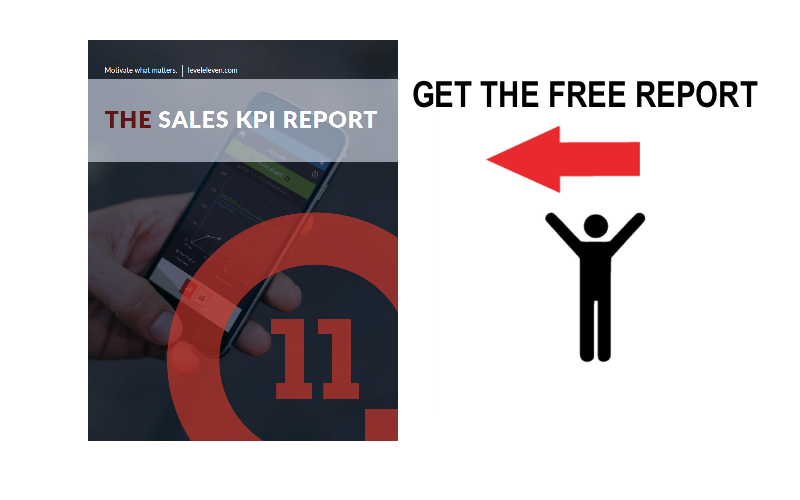 When you think KPIs for your sales team, do you think sales quotas, average deal size or revenue per sales rep? Well, think again. Defining a KPI within a sales organization is often misunderstood and therefore, misused.
When you think KPIs for your sales team, do you think sales quotas, average deal size or revenue per sales rep? Well, think again. Defining a KPI within a sales organization is often misunderstood and therefore, misused.
To better understand how to get this right and build your own KPI-driven sales machine, this post will unravel the fundamentals of a KPI and how to make it work for your own team.
So, what is a sales KPI?
Before we go too much further, KPI stands for Key Performance Indicator. It’s really three things – an instrument to help you meet your end goal, it’s trackable and monitored on a regular basis, and it’s a tangible piece of data to indicate you are headed towards your desired outcome.
KPI’s can be bucketed into “leading indicators” and “lagging indicators.” This is a very important distinction, as lagging indicators measure the result of what came before it — for example, closed sales, average deal size and sales cycle length. It’s a measure, but you can’t really do anything about it anymore because it already happened.
Leading indicators, on the other hand, are measures that reveal whether you are headed towards achieving your desired result, and ideally, they’re controllable. If you are behind on a leading indicator, you can change your behavior to affect the result. For example, if your lagging indicator goal is higher deal sizes, a leading indicator may be that you are completing ROI evaluations with decision makers, or are always including a certain add-on product to your proposals.
In this post, we’re going to put our attention on leading indicators as it’s the biggest area where sales leaders “swing and miss” when it comes to effective management of their salespeople. For instance, when sales managers jab at their sales team, “We’ve got to step it up. Close 10 more deals by the end of the month,” that’s not really productive or helpful, is it?
Your salespeople want to close business too, and that’s how they get paid and keep their job. Do you think Olympic coaches tell their athletes: “Run faster so you’ll win!”? No way. So stop doing that to your sales team. As I mentioned in a recent post, stop managing sales quotas, and start managing sales performance.
KPIs shift focus away from the finish line and encourage salespeople to work on the controllable and proactive behaviors that will yield the ideal outcome. KPIs allow a sales team to take a step back to think about what works, see where they are spending their time and recalibrate their plan of attack as necessary.
Been defining your sales KPIs all wrong? I used to, too.
When I started managing a sales team at my last company, ePrize (now HelloWorld), I was that guy who was a quota manager. I would ask my team questions like: “How much are you going to close this month?” or “What will it take to close that key deal this week?” While those are important pieces of information to discuss, it wasn’t really helping my salespeople and wasn’t going to help us hit our goals next month or next quarter.

That’s when and where I actually created the paper-based version of what LevelEleven has become. It was literally a piece of paper I called the “Sales Playbook,” complete with a sports design and theme, along with a personalized version based on each salesperson’s goals. We filled it with the KPIs my team and I identified as most important to be executing each day to help us hit our overall goals — and they weren’t just making calls and sending emails.
Here’s what we measured:
- Proactive ideas delivered to customers. This spurred us to think up creative and relevant ideas that would help our clients be successful by working with our company. It would also make them think of us as innovative marketers, versus just another marketing technology vendor. It was just enough information to intrigue the prospect, but not so much information that we spent a ton of time planning each one. We set specific measures on how many proactive ideas would be sent to prospects.
- Conversations. If you’re in sales, you need to be talking with people. It allows you to learn more about their business, get your ideas out there and uncover opportunities. And if you’re sending out proactive ideas like we were, it should help get meetings. Plus, if you hire good salespeople who are genuine, personable and curious, that’s an asset you want to be leveraging to be in front of people.
- New Opportunities. The third was to be creating qualified sales opportunities. As you can see, each KPI has a cascading effect on the next, though remains somewhat in the salesperson’s control. If you have a conversation, you still need to make sure you’re creating opportunities out of it. The key is to have a specific goal in mind to be pushing for.
- Closing sales. And of course, the final and ultimate goal is to close deals!
Now keep in mind, that’s what worked for our sales teams at ePrize. But it’s going to be unique to each company based on your target market, target buyer, deal sizes, sales cycles and the makeup of your sales team. Our sales team at LevelEleven has its own set of sales KPIs, and your team will too.
As you can see, it’s really all about defining the main areas where you want your sales team to spend their time and that are mostly likely to drive the final result everyone desires – winning business. With these measures and all the data you will accumulate by keeping track of them, you and your team will be equipped to build a performance-driven sales team.
So, there it is. Myth busted. Stay tuned for more KPI insights. In the meantime, what is a sales KPI to you, and what approach does your sales team take toward them? We’d love to see your comments below.
Ever wonder what the most common KPIs are? We analyzed over 1,5000 activities measured at 100+ companies to find out:




